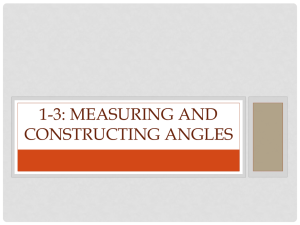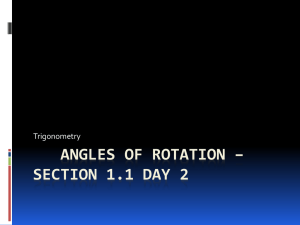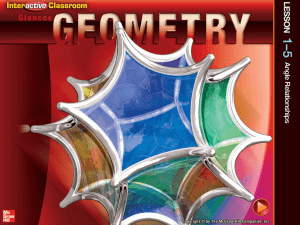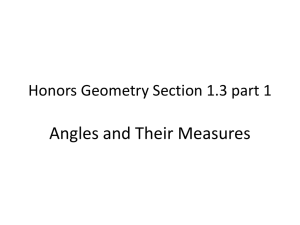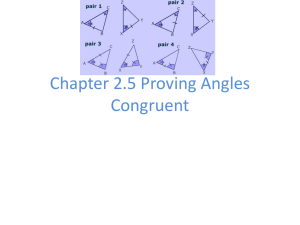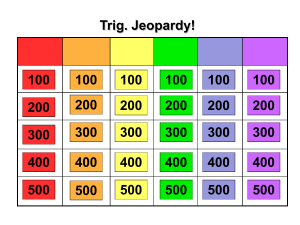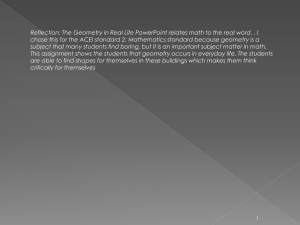1-6 Measuring Angles
advertisement
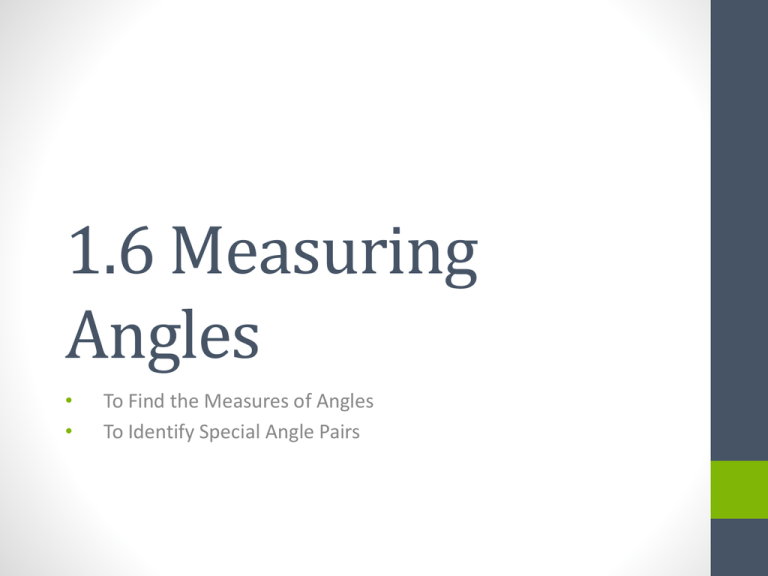
1.6 Measuring Angles • • To Find the Measures of Angles To Identify Special Angle Pairs What is an Angle? • An Angle (<) is formed by two rays that share the same endpoint. • The rays are the sides of the angle. • Here Ray BT and Ray BQ meet at the vertex of the angle, which is B. Naming an Angle… We can name this Angle… • By its vertex: • < B (Angle B) • By using three points: • < TBQ (Angle TBQ) • < QBT (Angle QBT) • By a Number: • < 1 (Angle One) Naming Angles • Name <1 in two other ways. • < AEC • <CEA • Name <CED in two other ways. •<2 • <DEC • Can we name any of the angles <E? Why or Why not? Example 1A a. Give Two other names for <ABD. b. Which 3 Angles have D as their Vertex? Example 1B c. Does <3 and <Z name the same Angle? Explain. d. List all the angles that have W as a Vertex. Classifying Angles by their Measures Classifying Angles by their Measures Congruent Angles… • Angles with the same measures are Congruent Angles. • In other words… • If 𝑚 < 1 = 𝑚 < 2 then < 1 ≅ < 2 Angle Addition Postulate… Ex 2: Using the Angle Addition Postulate a. What is m<TSW if m<RST = 50 and m<RSW = 125? Ex 2B: Try one… If m<DEG = 145, find m<GEF. (Remember m<DEF=180 because it’s a Straight Angle) Ex 3: Some More Algebra… c. In the figure, ray XP and ray XT are opposite rays and ray XQ bisects <PXS. For each situation, find the value of x and the measure of the indicated angle. Ex 3: Some More Algebra… d. Find m<RXS. Identifying Angle Pairs… Example 4 Tell whether each pair of angles are only adjacent, adjacent and form a linear pair, or not adjacent. a. <AEB and <BED b. <AEB and <BEC c. <DEC and <AEB Identifying Angle Pairs… Identifying Angle Pairs… Ex 5: Identify Angle Pairs Ex 6: Find The Measure… Find: a) complement of <F b) supplement of <F Ex 7: Find x! What can I assume from a diagram? If you are given a diagram, there are some ideas we can conclude just by looking at it. You can conclude that angles are: • Adjacent • Adjacent Supplementary • Vertical • Straight What can’t I assume from a Diagram? Unless there are marks or symbols indicated in the diagram, you cannot assume that: • Angles or segments are congruent • Angles are Right or 90 degrees • Lines are Parallel or Perpendicular Make Conclusions… Ex 8: Can you make these conclusions? Closure… • How are angles classified? • What are the special Angle pairs?
